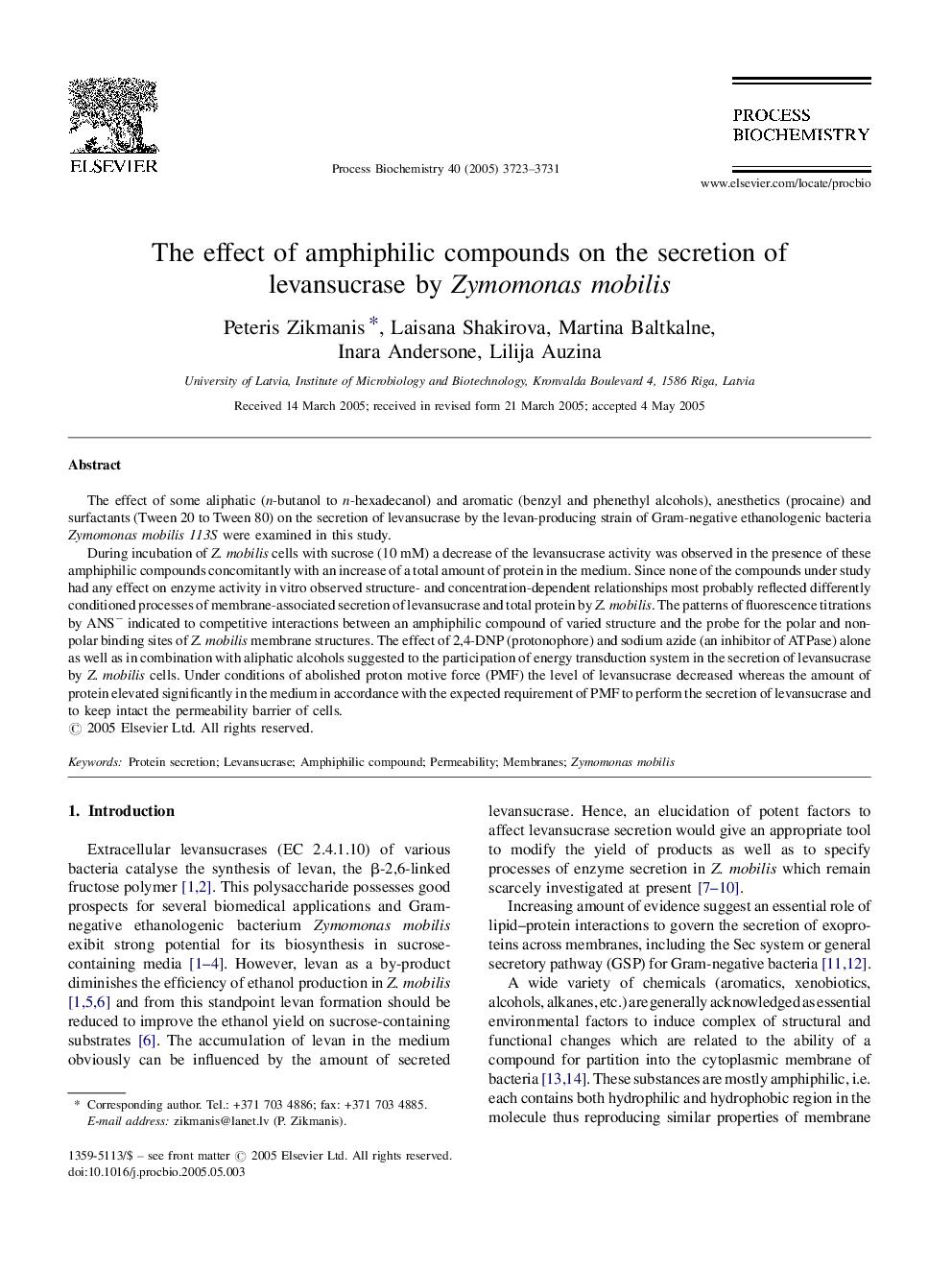| Article ID | Journal | Published Year | Pages | File Type |
|---|---|---|---|---|
| 36580 | Process Biochemistry | 2005 | 9 Pages |
The effect of some aliphatic (n-butanol to n-hexadecanol) and aromatic (benzyl and phenethyl alcohols), anesthetics (procaine) and surfactants (Tween 20 to Tween 80) on the secretion of levansucrase by the levan-producing strain of Gram-negative ethanologenic bacteria Zymomonas mobilis 113S were examined in this study.During incubation of Z. mobilis cells with sucrose (10 mM) a decrease of the levansucrase activity was observed in the presence of these amphiphilic compounds concomitantly with an increase of a total amount of protein in the medium. Since none of the compounds under study had any effect on enzyme activity in vitro observed structure- and concentration-dependent relationships most probably reflected differently conditioned processes of membrane-associated secretion of levansucrase and total protein by Z. mobilis. The patterns of fluorescence titrations by ANS− indicated to competitive interactions between an amphiphilic compound of varied structure and the probe for the polar and non-polar binding sites of Z. mobilis membrane structures. The effect of 2,4-DNP (protonophore) and sodium azide (an inhibitor of ATPase) alone as well as in combination with aliphatic alcohols suggested to the participation of energy transduction system in the secretion of levansucrase by Z. mobilis cells. Under conditions of abolished proton motive force (PMF) the level of levansucrase decreased whereas the amount of protein elevated significantly in the medium in accordance with the expected requirement of PMF to perform the secretion of levansucrase and to keep intact the permeability barrier of cells.
